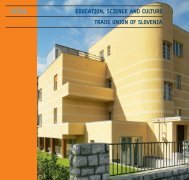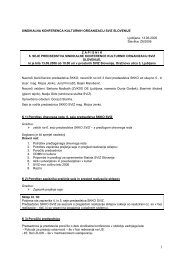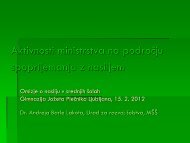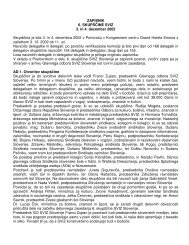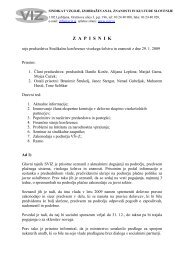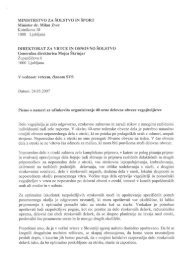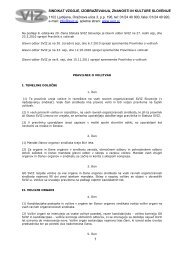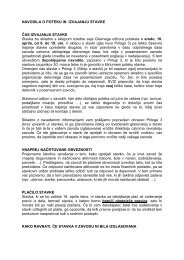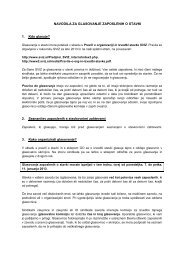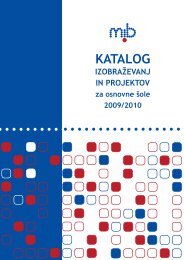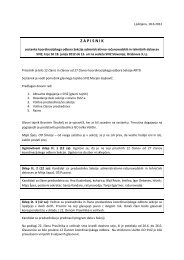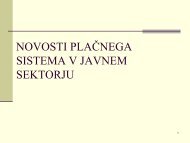You also want an ePaper? Increase the reach of your titles
YUMPU automatically turns print PDFs into web optimized ePapers that Google loves.
PROGRAM / PROGRAM<br />
146<br />
of Jesus is particularly apt. This part concludes when Peter (or the sinner)<br />
realises what he has done.<br />
At the centre of the second part is the course of Pilate’s judgment, which is<br />
dictated by the incited Jewish people. In the choruses Bach uses more modern<br />
imitation or homophony; it is only the movement in which the Jews justify<br />
their decision on the basis of the law (Wir haben ein Gesetz) that is written<br />
as a fugue. Pilate wants to set Jesus free but the people demand his death.<br />
There follows the crucifixion on Golgotha, Jesus’ death and the subsequent<br />
events, concluding with the burial at which the believers also reflect upon<br />
their own death. The scene of Jesus’ death is concentrated around the text:<br />
“It is accomplished”. Connected to this is a slow, introverted alto aria, with<br />
a contrasting, triumphant central section. Linked to this in a different way<br />
is a bass aria in which Jesus’ exclamation is transformed into a question: in<br />
saying what he said did he also liberate the souls of the believers from death?<br />
A soft ‘yes’ appears with the same musical motive as the preceding question.<br />
The various texts of the passion are linked by characteristic key phrases.<br />
Thus, for instance, the chorale that follows Pilate’s declaration “I have written<br />
what I have written” is connected with the name that he wrote above<br />
Jesus’ cross, only that now this name is inscribed in the heart of the believer.<br />
The key phrases of the text can also denote the character of the individual<br />
movements of the passion. In the arias there is normally the expression of a<br />
particular affect, while in almost all of the movements we find diverse tone<br />
painting of specific phrases. For example, the words ‘übeltätig’ (criminal) and<br />
‘töten’ (kill) in the chorus of the Jews who demand Jesus’ death are set to music<br />
with long, chromatic melismas; the incessant flogging is illustrated by a long<br />
melisma in recitative Barabas aber on the word ‘geißelte’. Quite different is<br />
the long, harmonic melismatic illustration of a rainbow (‘Regenbogen’) in<br />
the aria Erwäge, wie sein blutgefärbter Rücken. Also characteristic are the<br />
rapid passages of notes on the words ‘eilt’ and ‘flieht’ (hurry, fly) in the aria<br />
Eilt, ihr angefochten Seelen.<br />
Bach revised the St John Passion more than any other work. For Good Friday<br />
in 1725, Bach replaced the introductory and final movements with two reworked<br />
chorales for chorus and instrumental accompaniment. Three arias<br />
were also replaced, one of which includes a chorale. Thus the St John Passion<br />
is actively included in the year of Bach’s cycle of so-called ‘chorale cantatas’.<br />
In three reworkings from 1732 two sections were omitted: Peter’s lament<br />
and the earthquake scene. In the end, however, Bach rejected almost all of<br />
the later changes and only demanded a somewhat enlarged performance<br />
apparatus. In 1739, he embarked on an extensive reworking of the Passion,<br />
but this was not completed and he never returned to the work. The history<br />
of the changes to the St John Passion is surprising at every turn, with Bach’s<br />
felicitous experiments and original solutions.<br />
With the St John Passion Bach placed his own characteristic seal on the Good<br />
Friday vespers, which some years before his arrival in Leipzig had already<br />
developed into one of the city’s most important musical events. The passion



